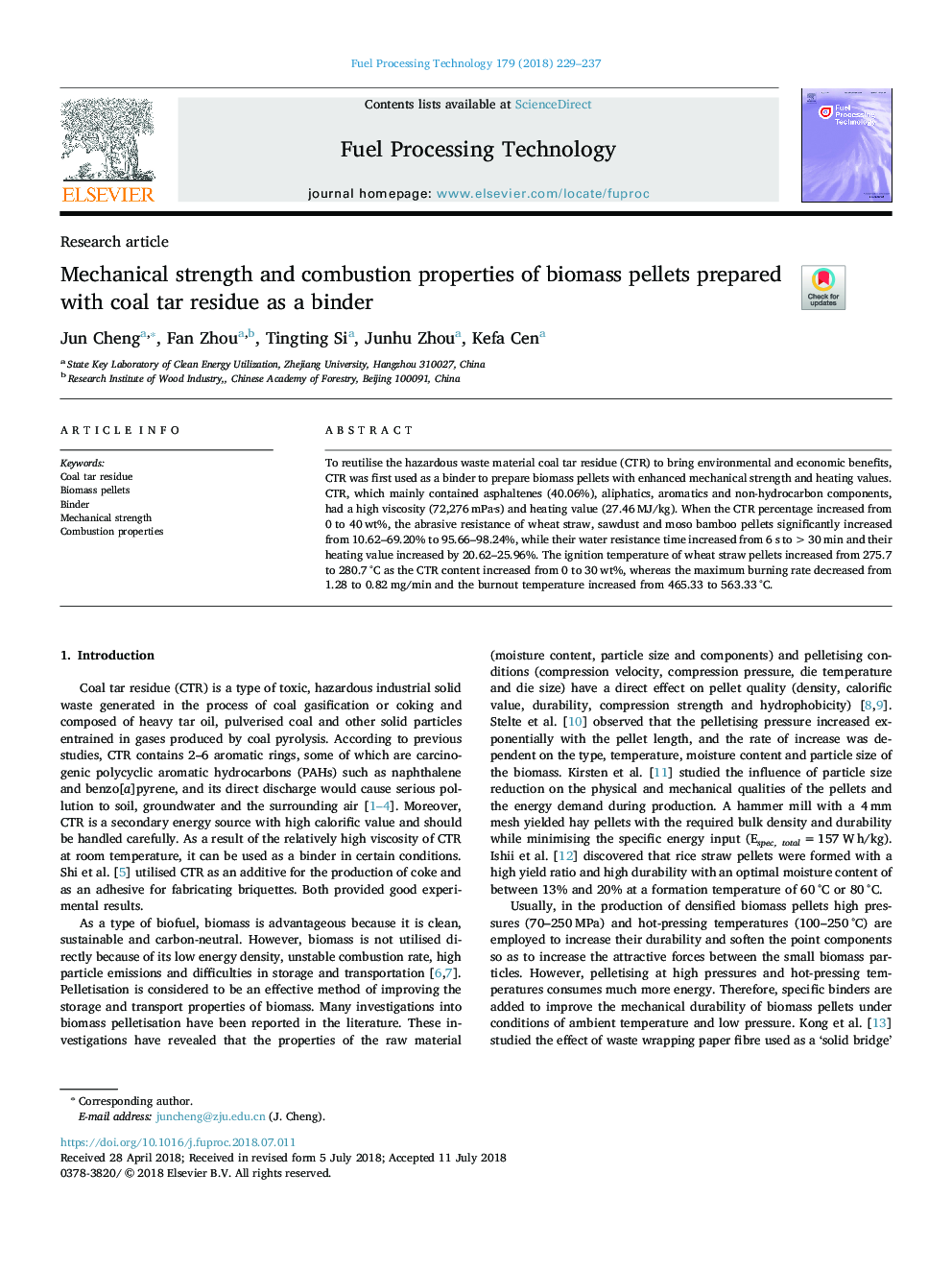| Article ID | Journal | Published Year | Pages | File Type |
|---|---|---|---|---|
| 11000591 | Fuel Processing Technology | 2018 | 9 Pages |
Abstract
To reutilise the hazardous waste material coal tar residue (CTR) to bring environmental and economic benefits, CTR was first used as a binder to prepare biomass pellets with enhanced mechanical strength and heating values. CTR, which mainly contained asphaltenes (40.06%), aliphatics, aromatics and non-hydrocarbon components, had a high viscosity (72,276â¯mPa·s) and heating value (27.46â¯MJ/kg). When the CTR percentage increased from 0 to 40â¯wt%, the abrasive resistance of wheat straw, sawdust and moso bamboo pellets significantly increased from 10.62-69.20% to 95.66-98.24%, while their water resistance time increased from 6â¯s to >30â¯min and their heating value increased by 20.62-25.96%. The ignition temperature of wheat straw pellets increased from 275.7 to 280.7â¯Â°C as the CTR content increased from 0 to 30â¯wt%, whereas the maximum burning rate decreased from 1.28 to 0.82â¯mg/min and the burnout temperature increased from 465.33 to 563.33â¯Â°C.
Related Topics
Physical Sciences and Engineering
Chemical Engineering
Chemical Engineering (General)
Authors
Jun Cheng, Fan Zhou, Tingting Si, Junhu Zhou, Kefa Cen,
